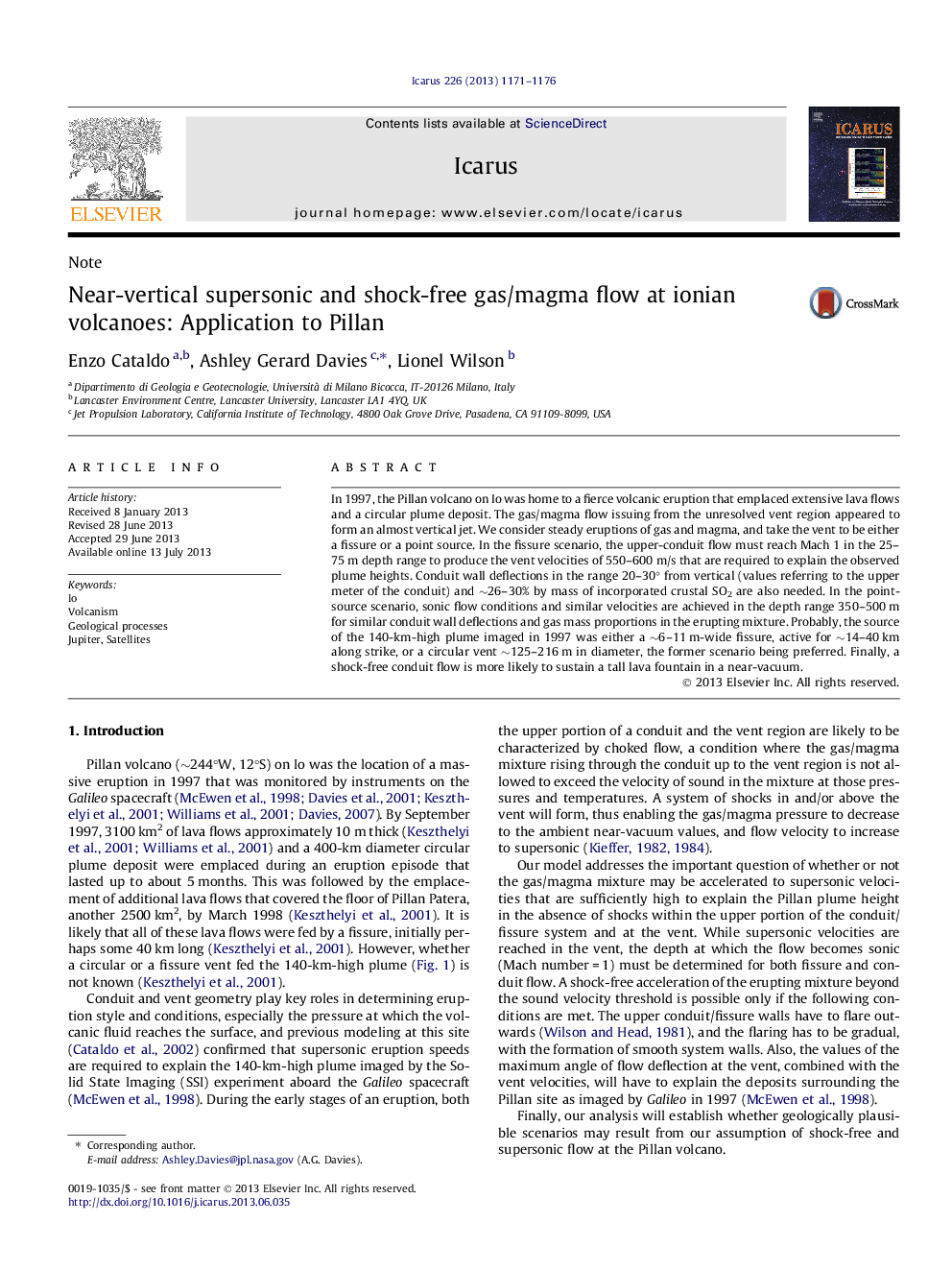| Article ID | Journal | Published Year | Pages | File Type |
|---|---|---|---|---|
| 10701368 | Icarus | 2013 | 6 Pages |
Abstract
In 1997, the Pillan volcano on Io was home to a fierce volcanic eruption that emplaced extensive lava flows and a circular plume deposit. The gas/magma flow issuing from the unresolved vent region appeared to form an almost vertical jet. We consider steady eruptions of gas and magma, and take the vent to be either a fissure or a point source. In the fissure scenario, the upper-conduit flow must reach Mach 1 in the 25-75 m depth range to produce the vent velocities of 550-600 m/s that are required to explain the observed plume heights. Conduit wall deflections in the range 20-30° from vertical (values referring to the upper meter of the conduit) and â¼26-30% by mass of incorporated crustal SO2 are also needed. In the point-source scenario, sonic flow conditions and similar velocities are achieved in the depth range 350-500 m for similar conduit wall deflections and gas mass proportions in the erupting mixture. Probably, the source of the 140-km-high plume imaged in 1997 was either a â¼6-11 m-wide fissure, active for â¼14-40 km along strike, or a circular vent â¼125-216 m in diameter, the former scenario being preferred. Finally, a shock-free conduit flow is more likely to sustain a tall lava fountain in a near-vacuum.
Related Topics
Physical Sciences and Engineering
Earth and Planetary Sciences
Space and Planetary Science
Authors
Enzo Cataldo, Ashley Gerard Davies, Lionel Wilson,
